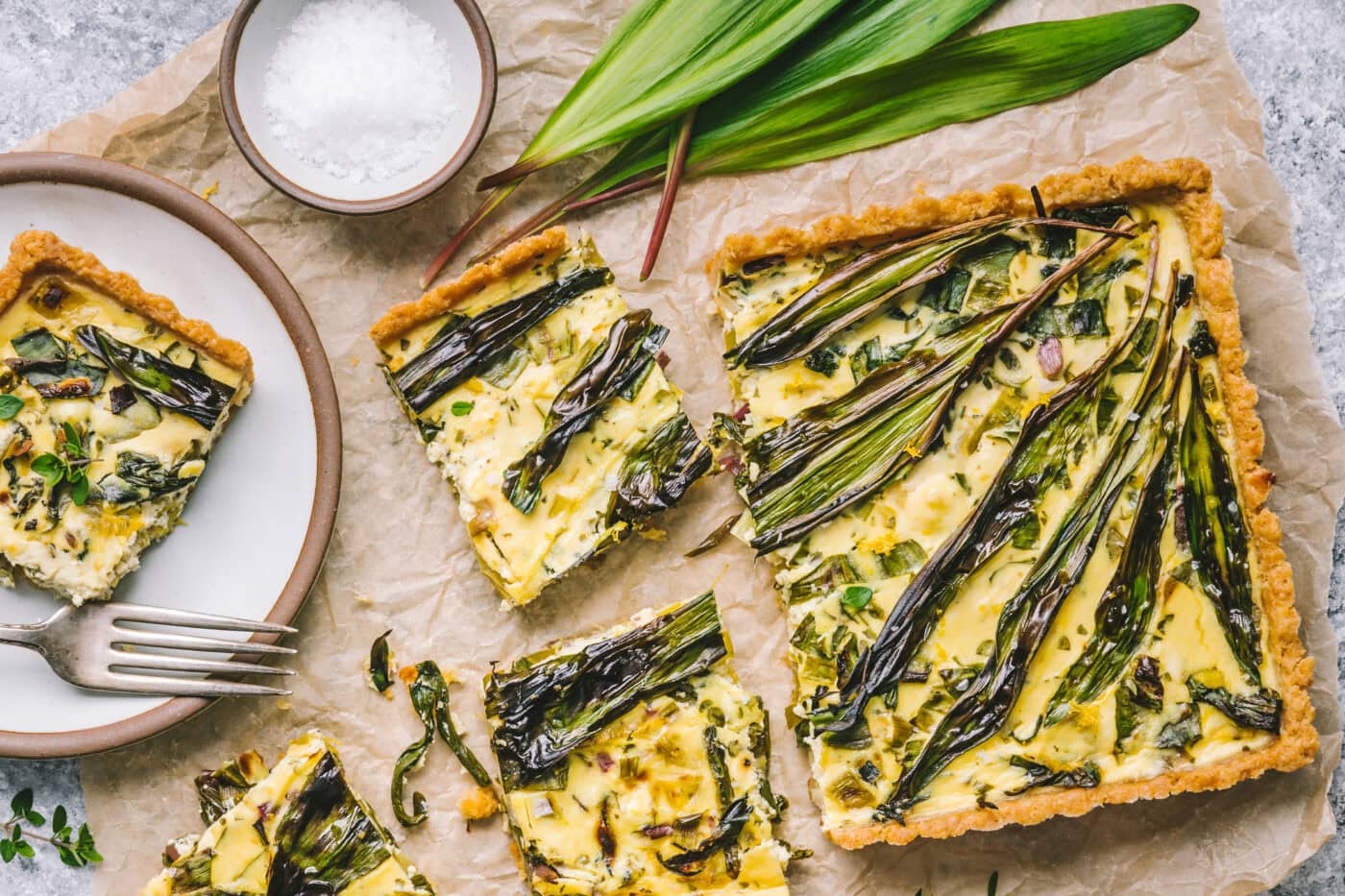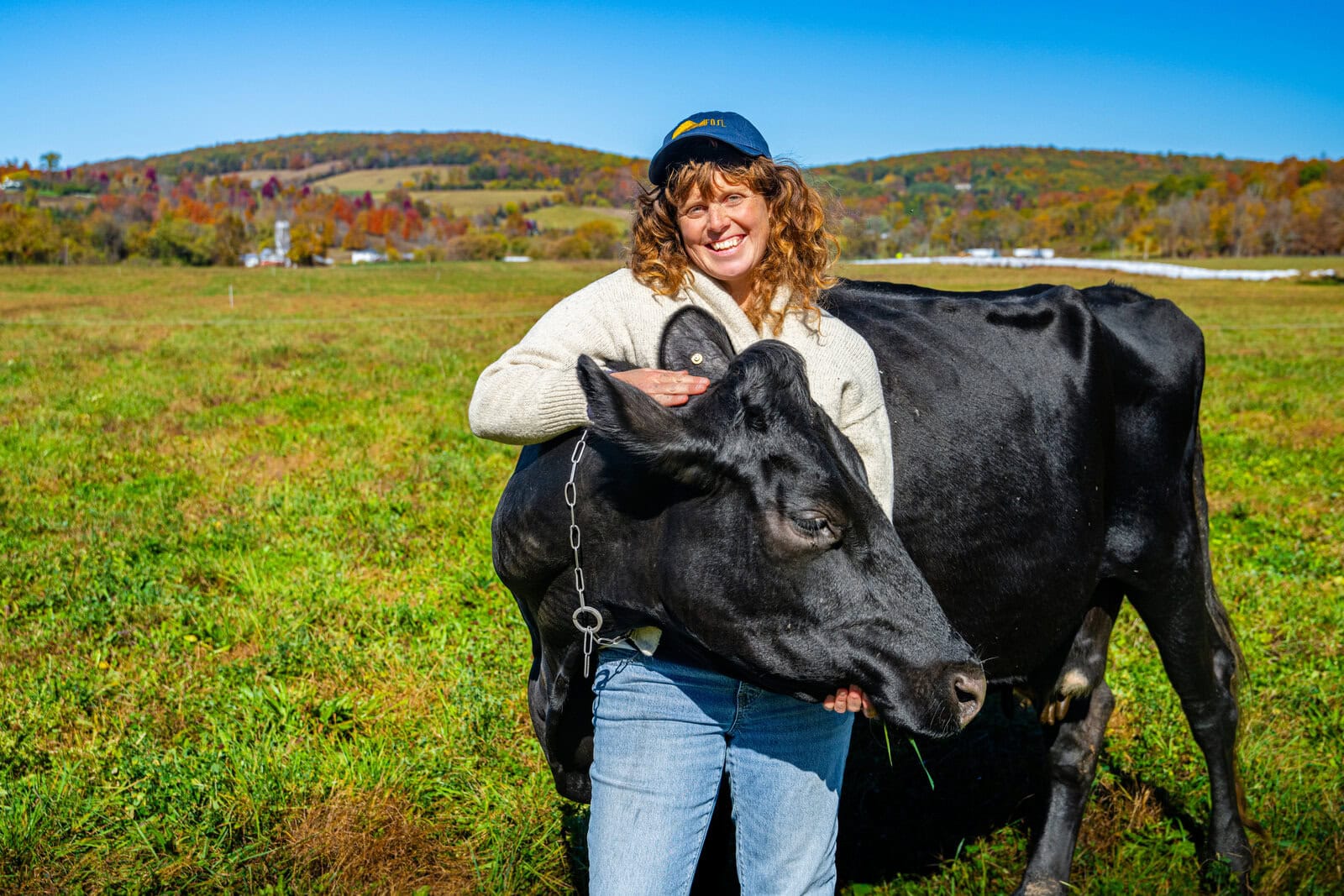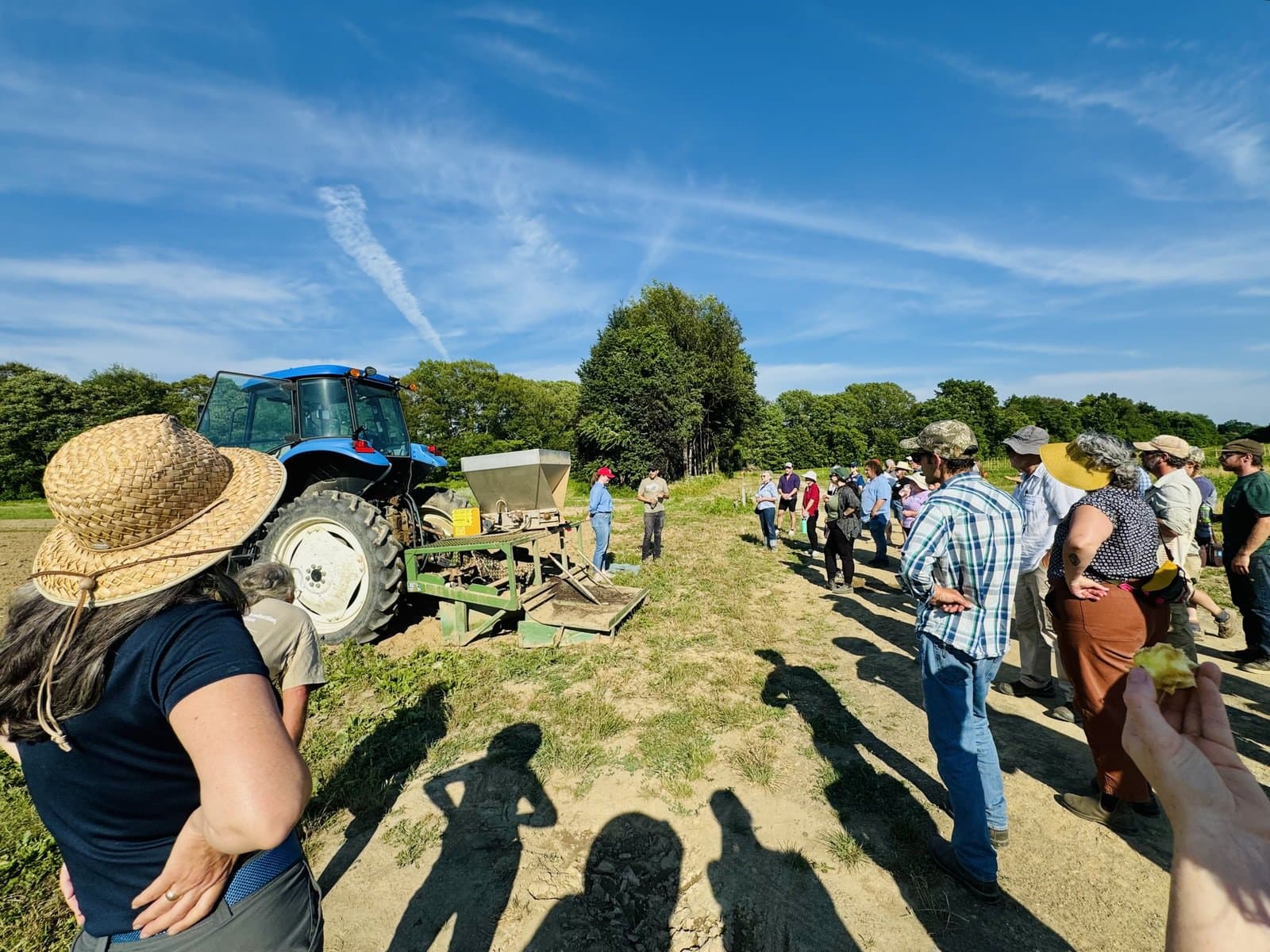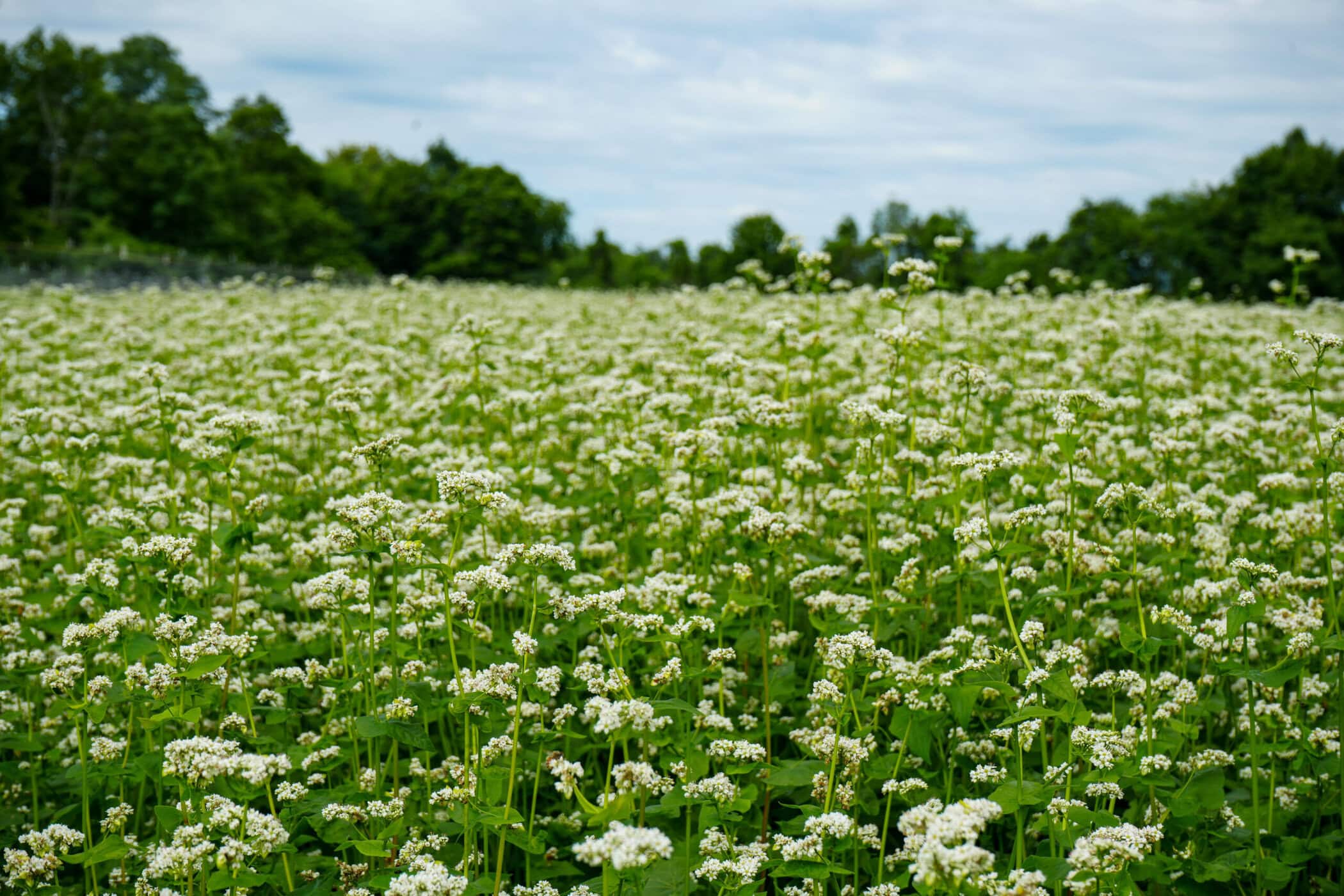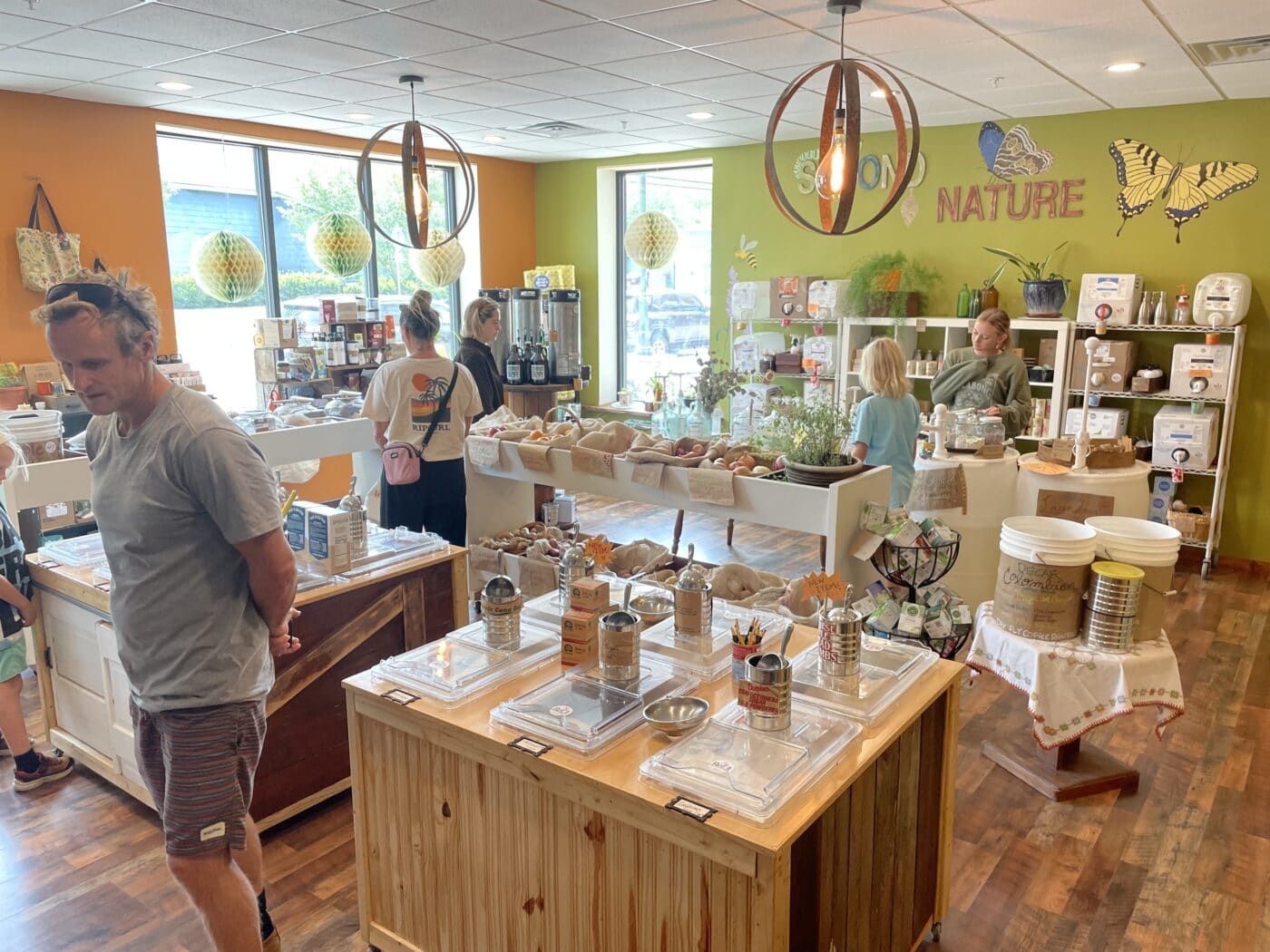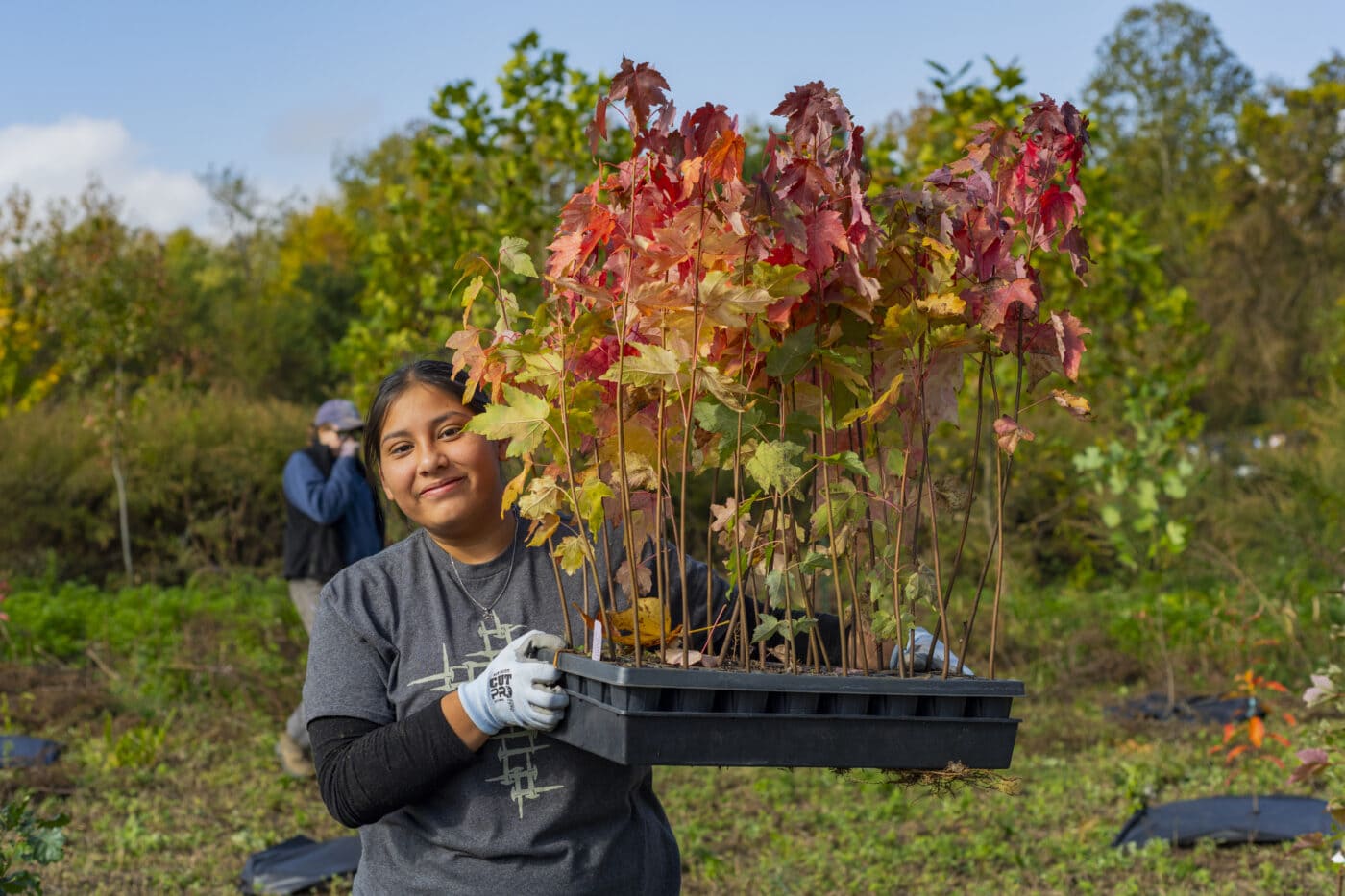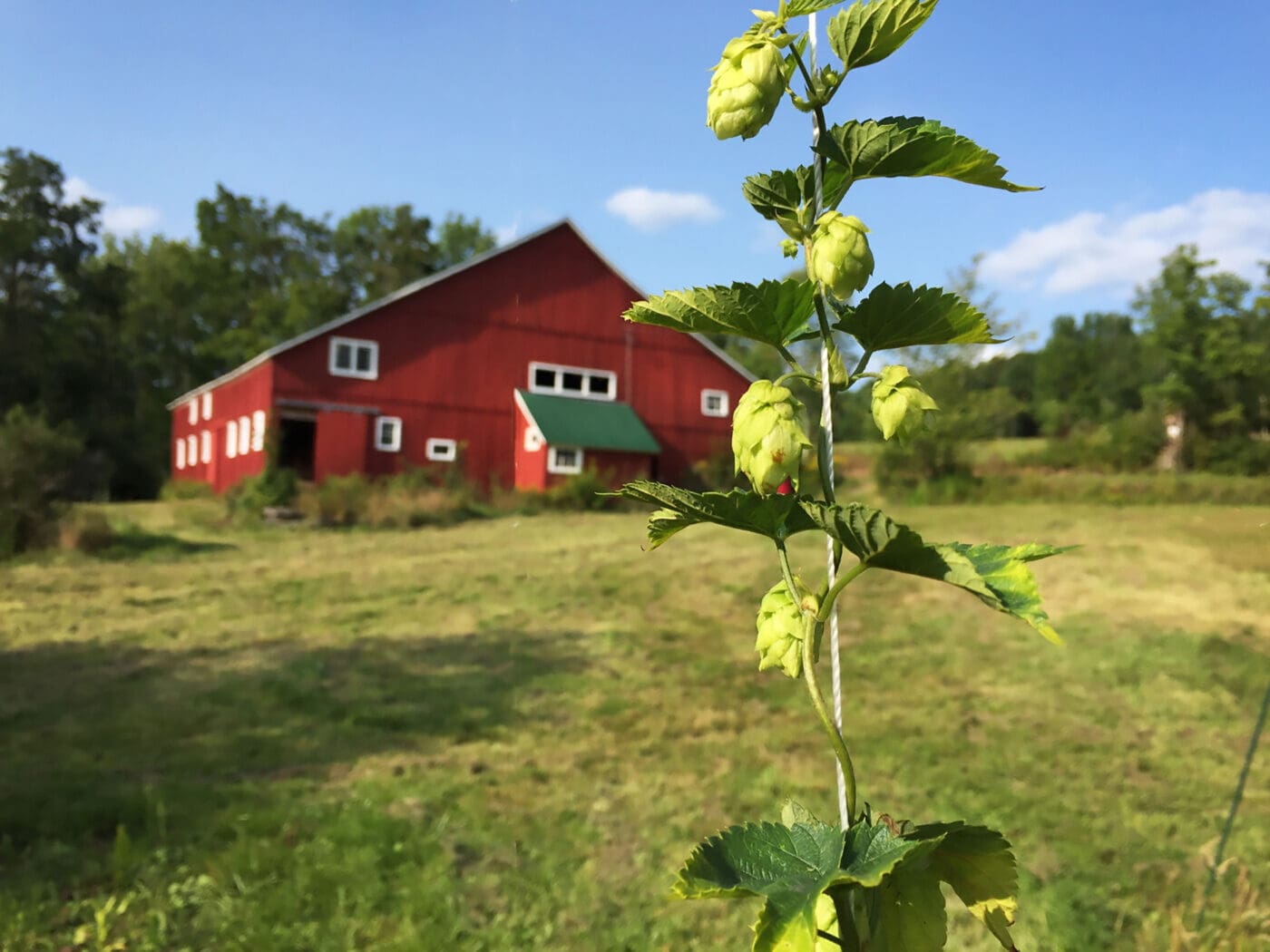Sometimes the tastiest local food is literally right under your feet. Every forager has their favorite native plant or mushroom, and every spring in the Hudson Valley, ours shoots up after the last snow melts, carrying the punchy, garlicky promise that will impart its flavor to any dish you cook with it. We’re talking, of course, about the ramp.
The wild ramp, allium tricoccum, has been harvested and used in culinary and traditional medicine in the American Northeast for hundreds of years. It’s in the same family as the wild or field garlic you’ll often see growing vertical shoots in your yard, but is much leafier, and way more pungent. If you love garlic, leeks, or onions, you too will fall in love with ramps.
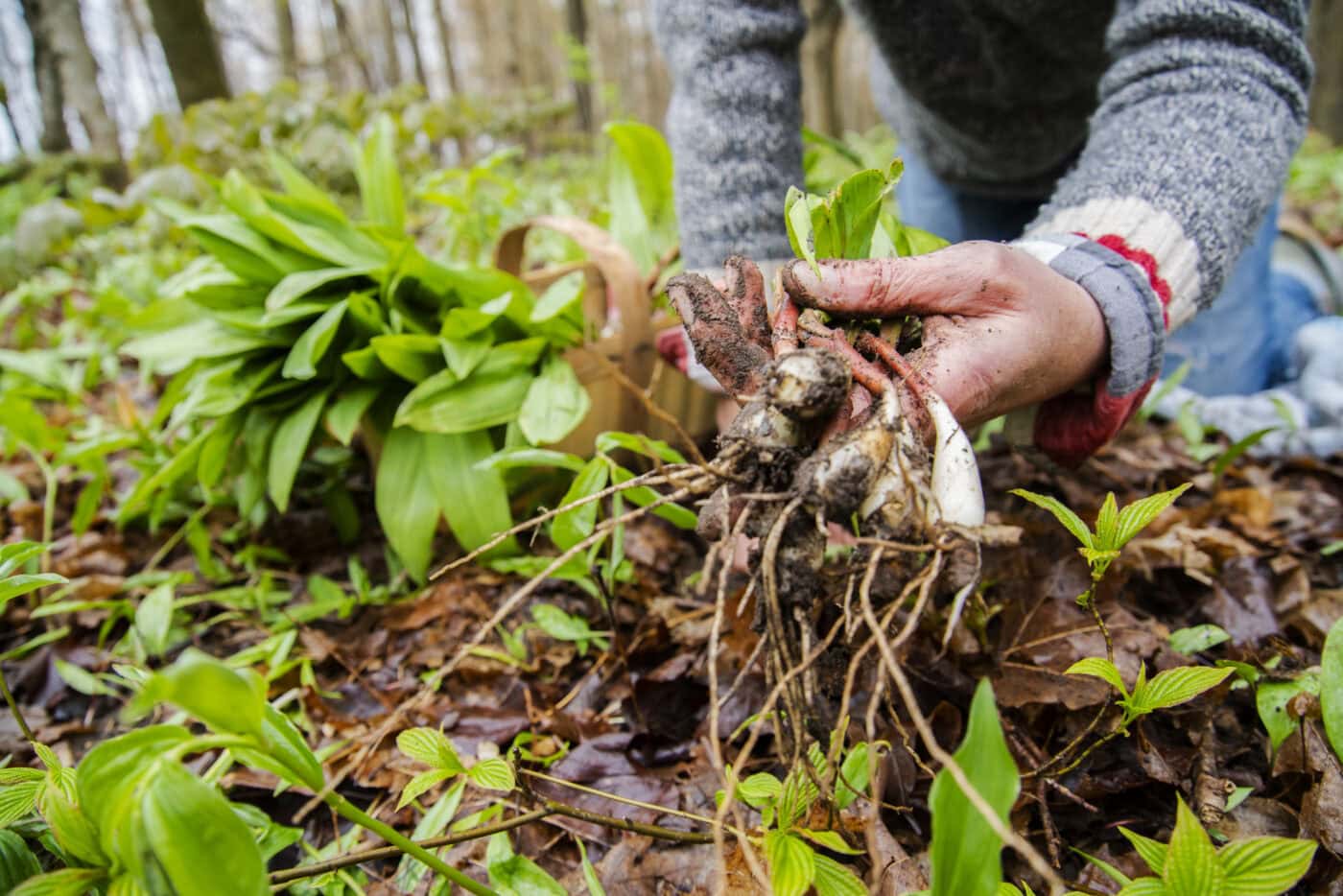
While you may not often see them in the grocery produce section, you may score some at a local farmers market, or even know someone who has an abundant patch in their yard. Wild-growing ramps are often a closely guarded secret. Ramps grow slowly, and a small percentage of the available plants should be sustainably harvested by cutting only the leaves and stems and leaving the bulbs and roots in the ground.
We love ramps in anything from ramp butter (slather it on grilled fish or meat) to quiches, paired with polenta or served on crostini smeared with fresh ricotta. But making a savory tart is one of our favorite ways to enjoy their flavor. This is a great brunch or light dinner option, and the combination of ramps and leeks makes it a delicious and healthy celebration of local produce.

The final element in the tart is goat cheese, and we’re spoiled for choice in the Hudson Valley — local farm creameries like Hoofprint and the Hudson Valley Creamery abound.
We like this tart with leeks, but if you happen to find local fresh spring onions (not scallions), those make a fantastic substitute. These are freshly-harvested, uncured onions that are smaller and sweeter than the standard onions you’ll find year-round. They’ll typically still be attached to their green stems, which are also edible.
For the crust, you could definitely use store-bought puff pastry, but we think our simple homemade short crust is worth the extra step. It doesn’t even need rolling out, just a pressing onto the pan.
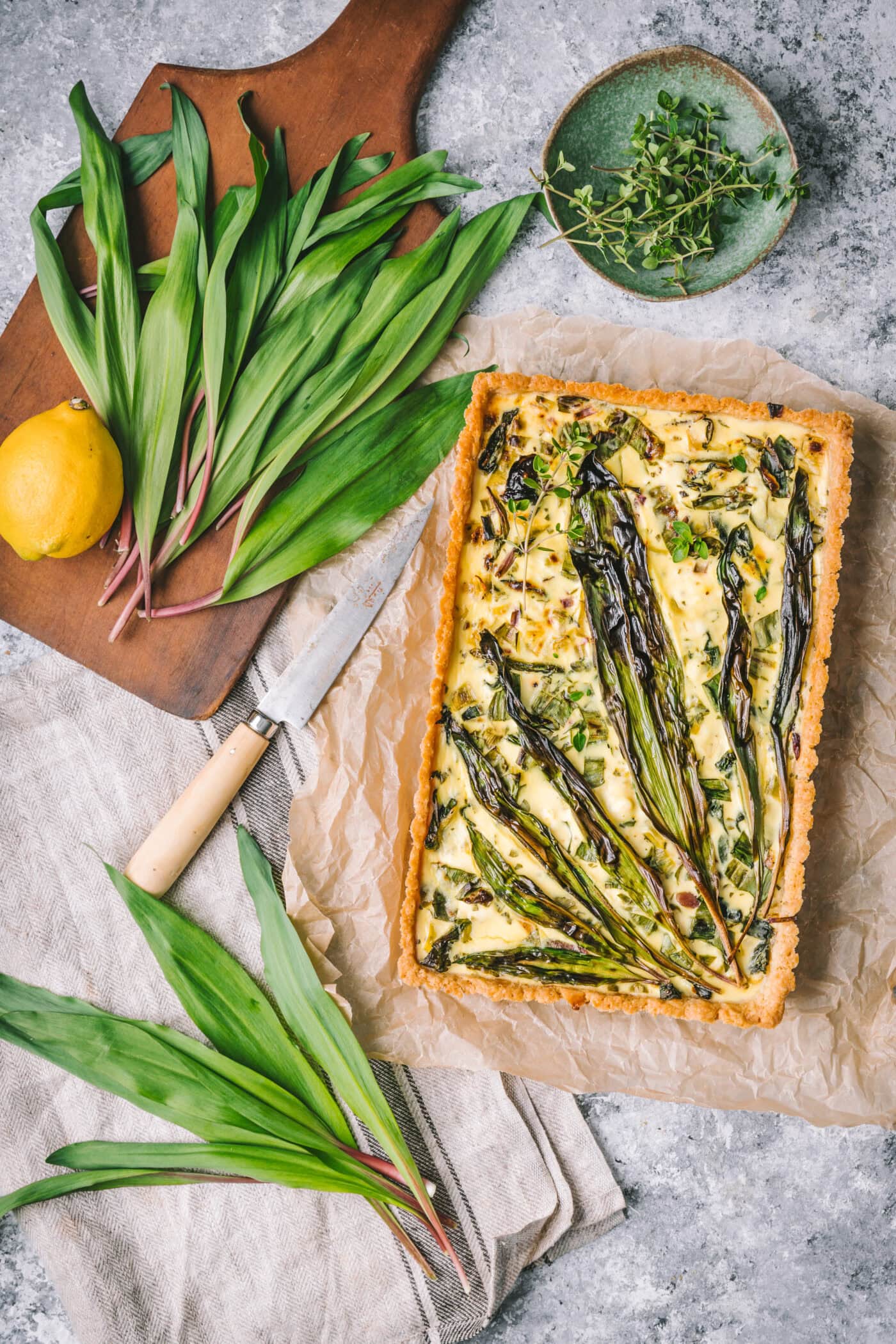
Cut the tart into 8 pieces and serve it warm or at room temperature. It reheats beautifully in a low oven (250ºF until warm, about 10 to 15 minutes), so feel free to make it ahead and heat it up when your guests arrive.
Ramp, Leek and Goat Cheese Tart
Ingredients
For the crust:
- 1 1/2 cups all-purpose flour
- 10 tablespoons unsalted butter (1 stick plus 2 tablespoons), straight from the fridge, and cut into small cubes
- 1 teaspoon sugar
- 1/2 teaspoon kosher salt
- 1/4 cup ice water or more as necessary
- Cooking spray
For the tart:
- 1 tablespoon extra-virgin olive oil
- 2 medium leeks, white and light green parts thinly sliced (or sub the same amount of fresh spring onions)
- Kosher salt and freshly ground black pepper to taste
- 3-4 ounces ramp leaves (about 24 leaves) roughly chopped; save 6 or so leaves whole for decorating
- 4 ounces fresh goat cheese chèvre, room temperature
- 2/3 cup heavy cream or half and half
- 2 teaspoons finely grated lemon zest from 1 large lemon
- 2 teaspoons chopped fresh thyme leaves
- 2 large eggs
Instructions
Make the crust:
- Heat the oven to 350ºF and set a rack in the middle slot. Spray an 11-inch (10 or 12-inch will also work) tart pan with a removable bottom lightly with cooking spray and line a rimmed baking sheet with aluminum foil.
- Combine the flour, butter, sugar and salt in the bowl of a food processor. Pulse until crumbly, about 15 one-second pulses. (You can also add everything to a bowl and cut the butter into the flour mixture with a pastry cutter or fork). Add the water and continue to pulse until the dough sticks together when pinched between your fingers.
- Tip the dough into the pan and use fingers to press it evenly on the bottom and up the sides. Use a fork to prick the bottom of the dough a few times. Place in the freezer to chill for at least 15 minutes (or wrap in plastic wrap and refrigerate overnight). Place it on the prepared baking sheet. Place another piece of foil over the chilled crust and fill it with pie weights, dry beans or even better, sugar. Bake until crust is light golden brown and baked through, 35-45 minutes. Let cool and remove the sugar and the foil. (You can re-use the toasty sugar for any baking project.)
Make the Filling:
- Rinse the leeks and ramps well to remove any dirt, and pat dry with a paper towel.
- Heat the oil in a large skillet set over medium-high heat. When the oil is shimmering, add the leeks (or onions) and lightly season with salt and pepper. Cook, stirring frequently, until soft and translucent, about 5 to 7 minutes. Lower the heat if they start to brown. Add the chopped ramps and cook until wilted, about 2 to 3 minutes longer. Transfer to a bowl and set aside.
- In a medium bowl, stir together the goat cheese, cream, lemon zest, thyme, and eggs. Season with salt and pepper and stir until mostly smooth. A few small lumps of cheese is fine.
- With the tart pan still on the rimmed baking sheet, spread the leek and ramp mixture over the bottom of the crust. Pour the custard mixture over the leeks. Arrange the whole ramps over the custard. Bake until the center is just firm to the touch and the tart is lightly golden, 25 to 30 minutes.
- Transfer the tart to a wire rack and let it cool for at least 15 minutes. Un-mold the tart and transfer to a serving platter. Cut the tart into 8 pieces and serve it warm or at room temperature. It reheats beautifully in a low oven (250ºF until warm, about 10 to 15 minutes), so feel free to make it ahead and heat it up when any guests arrive.
(If you do choose wild ramps, a few notes on responsible harvesting: The removal, including foraging, of plants is not allowed in Scenic Hudson parks. Foraging is also prohibited in New York State parks. Gathering wild food can create challenges, both collective and personal. Foragers should know what they are doing, follow the seven basic rules of foraging, and avoid harming the local ecosystem. They also note that the leaves of ramps in early spring are easily confused with those of lily of the valley, which are quite toxic.)
Emily and Matt Clifton cook, write, and eat in Beacon. Emily’s upbringing in NYC exposed her to more culinary influences than she could shake a chicken bone at; Matt grew up in rural England and very much enjoys swearing at his vegetable garden. They co-write the cookery blog Nerds with Knives and co-authored Cork and Knife and The Ultimate Dutch Oven Cookbook.


